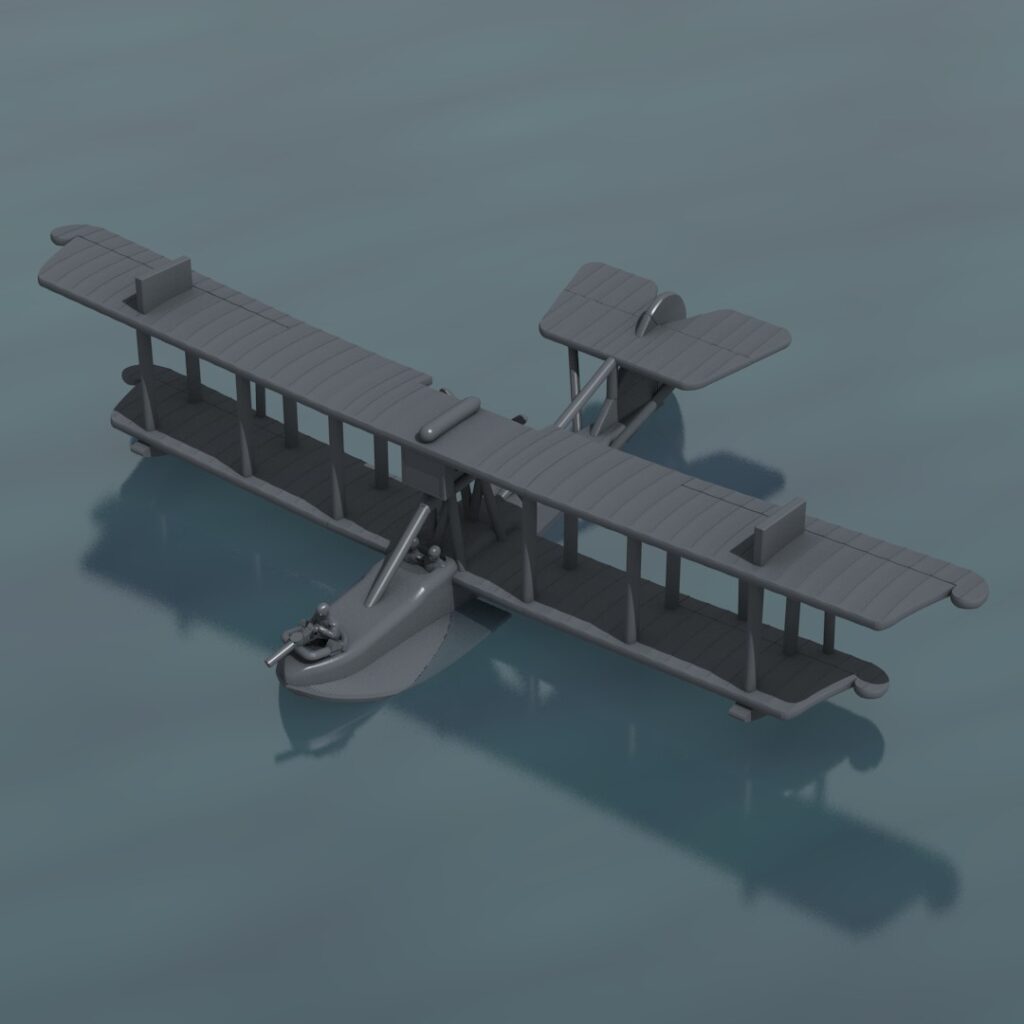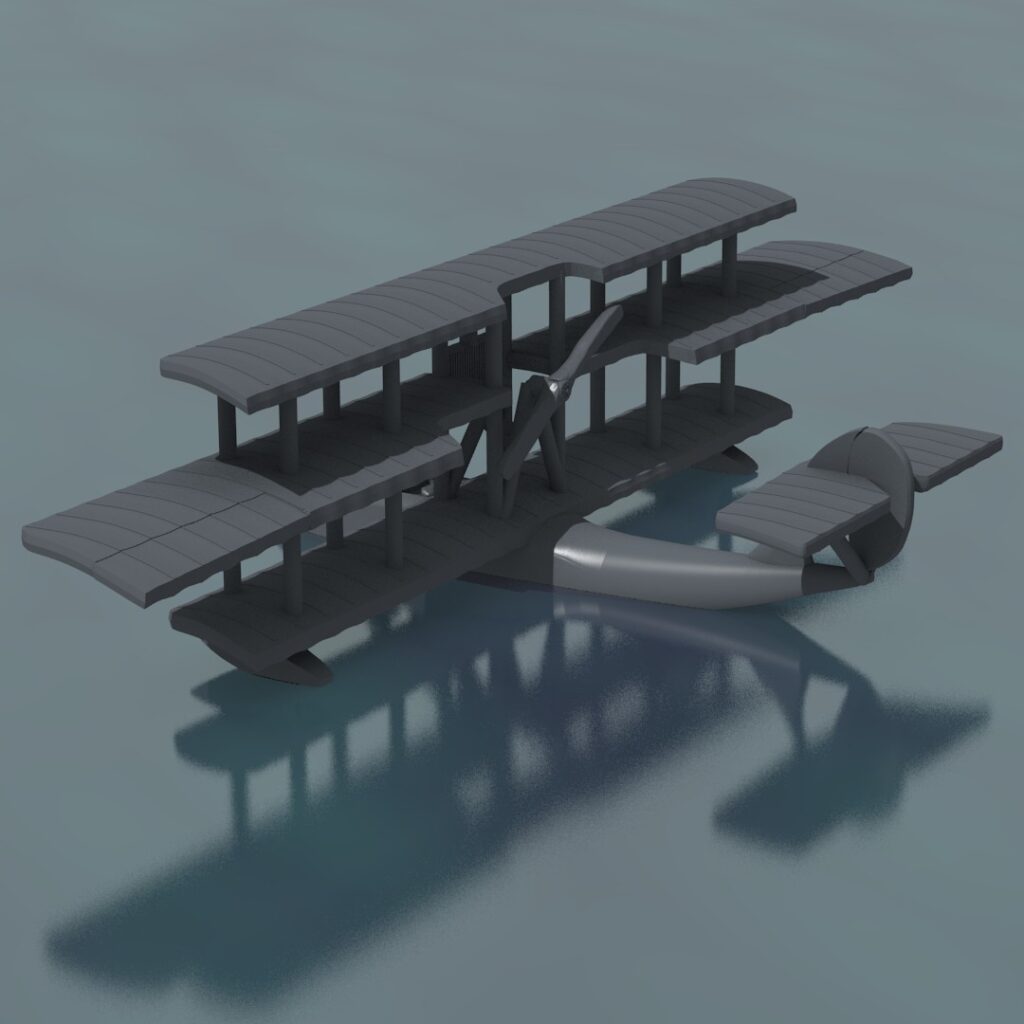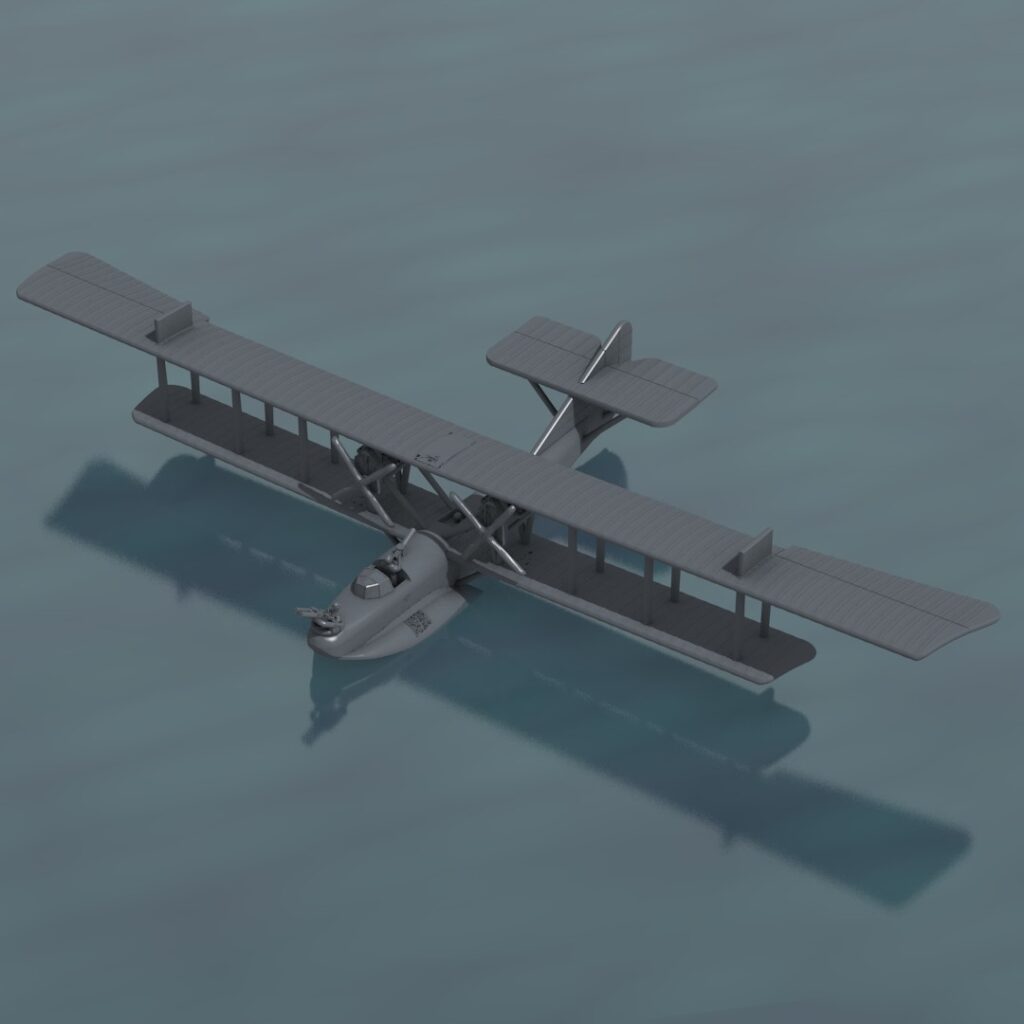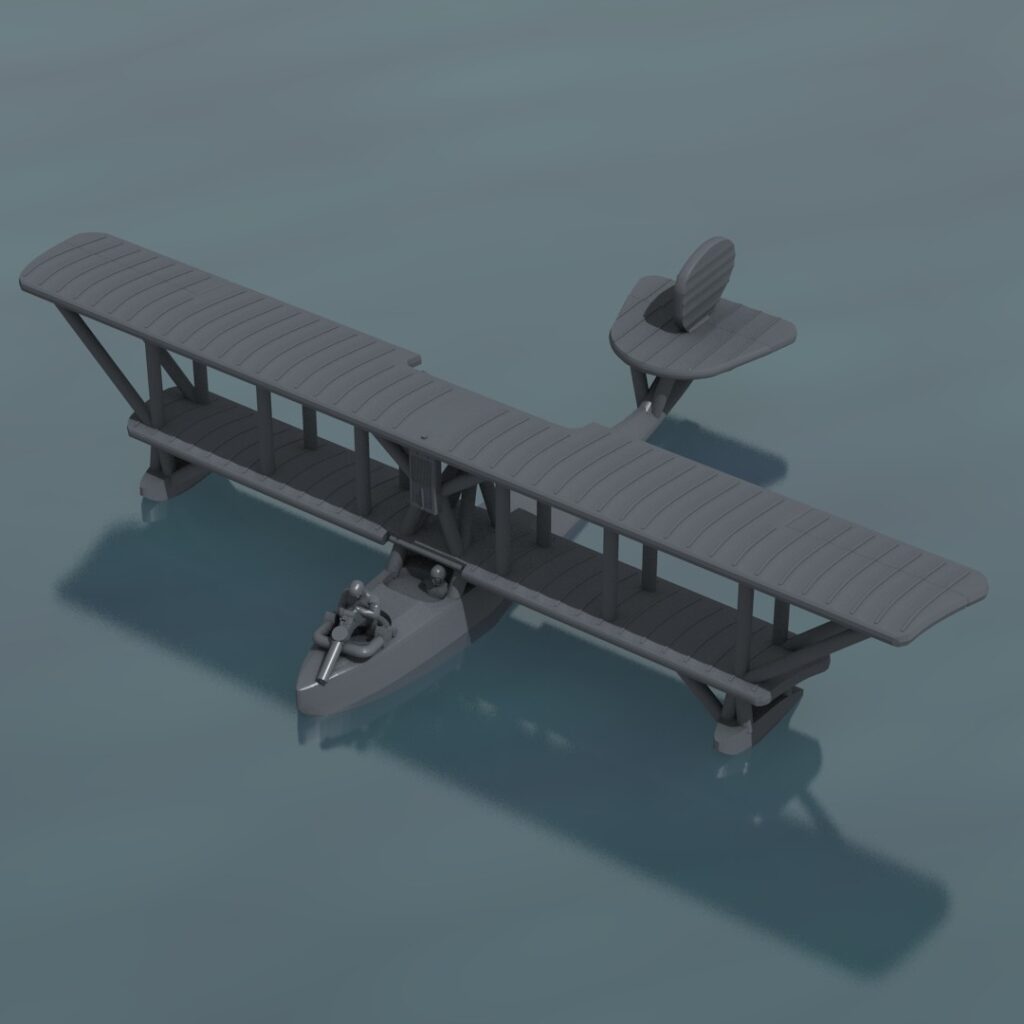The Curtiss HS flying boats were operated with great success by the US Navy during WWI, starting with the Curtiss HS-1L. They were powered by the 330hp Navy Liberty engine (providing the “L” in the name). HS-1Ls operated out of several bases in France as well as seeing extensive use in the States.
In order to increase the bomb load, the six-foot panels were added to each wing, the rudder was enlarged, and minor changes were made, creating the Curtiss HS-2L. The HS-2L was deployed near the end of the war, and it saw extensive use afterwards. Most HS-1Ls were eventually converted to HS-2Ls.
The original HS-1 (without the Liberty “L”) was driven by a 200hp Curtis VXX engine. The first to be reassembled and flown in the European theatre were on 13 June 1918. Gradually they replaced the Tellier T.3s previously in use by the US Navy in Europe. Mainly they were used for anti-submarine patrol, but they also performed mine-spotting and convoy escort.
Some HS-1Ls and HS-2Ls were flown by the US Marines out of Ponta Delgada in the Azores on anti-submarine duties. HS-1Ls and HS-2Ls formed the backbone of the newly-formed Royal Canadian Naval Air Service, with patrols flying out of Nova Scotia.
Paintable 1:144 miniatures for the Curtiss HS-1L and HS-2L are now available from Great War Planes by Reduced Aircraft Factory.





